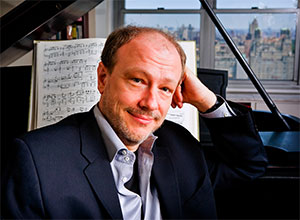by Mike Telin

“The concerto is such an incredible departure from what he did before. There’s an explosion of activity from the very beginning, and the way that he inserts a second slow movement in the middle of the rondo — that’s really quite exceptional.”
Hamelin said that he looks forward to working with Nicholas McGegan for the first time. “Nic is amazing, I was with him at the Van Cliburn back in May and June. He conducted all of the Mozart concerti during the competition, and just to see him at work told me a lot about what our rapport will be this weekend. I anticipate nothing but a delightful experience.”
The pianist made his Cleveland Orchestra debut in April of 2015 performing Haydn’s Piano Concerto No. 11 in D. His most recent area performance was in March of this year on the Cleveland International Piano Competition Concert Series at the Cleveland Museum of Art. Writing for ClevelandClassical.com, Daniel Hathaway said, “The pianist’s interpretation of Beethoven’s ‘Appassionata’ Sonata was a revelation … Hamelin’s playing was underpinned with rhythm as steady as an atomic clock. The intrusive peasant dance in the finale was crazy-fast but perfectly controlled.”
That program also included two one-movement sonatas by Russian composer Samuel Feinberg, revealing an important part of Hamelin’s artistic mission: unearthing musical gems. A quick perusal of the pianist’s extensive discography further illuminates this point — names like Medtner, Catoire, Godowsky, and Alkan sit comfortably next to Haydn, Brahms, Schumann, and Chopin. And unlike many pianists’ lists of recordings, Hamelin’s includes his own works — in 2010 he released his album 12 Etudes in all the minor keys, which was nominated for a Grammy.
This past summer Hamelin’s Toccata on “L’homme armé” was the required work at the Van Cliburn Competition. (L’homme armé is a French Renaissance song that is the basis for many Masses of the period.) The pianist also had the distinction of serving on the Competition jury. He said that sitting through multiple performances of his piece was “an incredible privilege. I don’t know of any composer who’s ever gotten 30 premieres. It was a dream situation because the rules this year changed. Previously only semi-finalists were required to play the new work and this year it was everybody.”
He said he was pleased that the work was so well-received. “When I was writing it I was fully expecting that people would get sick of it. I tried to be myself and write what I wanted to write, and people seemed to like it. It was wonderful that Peters, the publishing house who’s been putting out some of my pieces, published in time for it to be available at the Competition. They must have sold something like 300 copies. People really took to it.”
Hamelin said that he tried to be as clear as possible with his notation. “My main concern was to be understood. I did provide a metronome marking but a few people played it too fast. Still, I was delighted with the performances.”
Does being a composer influence his approach to playing? “Very much. It brings you closer to anyone’s work you perform. You don’t take what others have written for granted, and you understand the effort that goes into notation. You have much more of an insight into how the compositions were put together, and I think being a composer enables you to make better interpretive decisions.”
To hear Hamelin perform Toccata on “L’homme armé” click here. The printed music is available online.
Published on ClevelandClassical.com November 16, 2017.
Click here for a printable copy of this article



